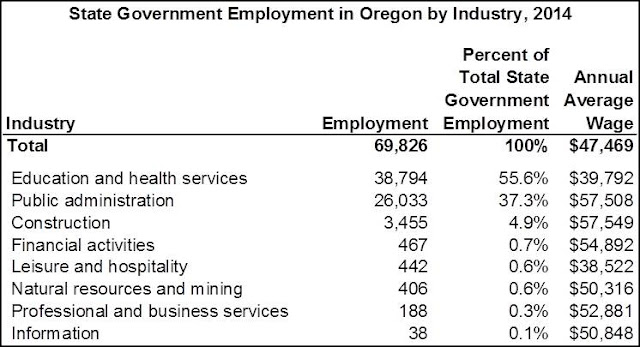According to the Higher Education Coordinating Commission, the annual number of students attending Oregon’s public universities has grown from 109,003 in 2004-05 to 131,645 in 2014-15, or by 21 percent. This growth in student enrollment has been surpassed by the growth in the number of students taking online courses.
The number of students taking at least one online course has grown by 141 percent – from 14,074 (12.9%) in 2004 to 33,896 (25.7%) in 2014. The number of university students taking only online classes also increased from 2,306 in 2004 (2.1%) to 15,129 (11.5%) in 2014. Conversely, the percentage of university students not taking any online courses has been declining from 92,623 (85.0%) in 2004 to 82,620 (62.8%) in 2014.
Distance education has made higher education more accessible – especially to working adults, caregivers, students with disabilities, and others who have schedules and responsibilities that are incompatible with attendance in traditional, face-to-face classroom instruction. Throughout the past 10 years, student enrollment in online courses continued to grow at a higher rate than overall student enrollment in colleges and universities. There still are some challenges, though, as outlined by the Instructional Technology Council (ITC) which is a non-profit organization that represents nearly 400 institutions offering distance education courses in the United States, Canada, and around the world. The challenges cited by ITC include:
- Colleges need to offer better preparation for first-time online students so they will be ready to learn on day one.
- The lack of computer and internet access for a portion of the population severely impacts students’ ability to access online offerings.
- Student retention in online courses tends to be 8 percentage points lower than that of face-to-face instruction, according to ITC. Online students need to be self-disciplined to succeed. Many students underestimate how much time online coursework requires and others fall behind due to responsibilities of work and/or families.







